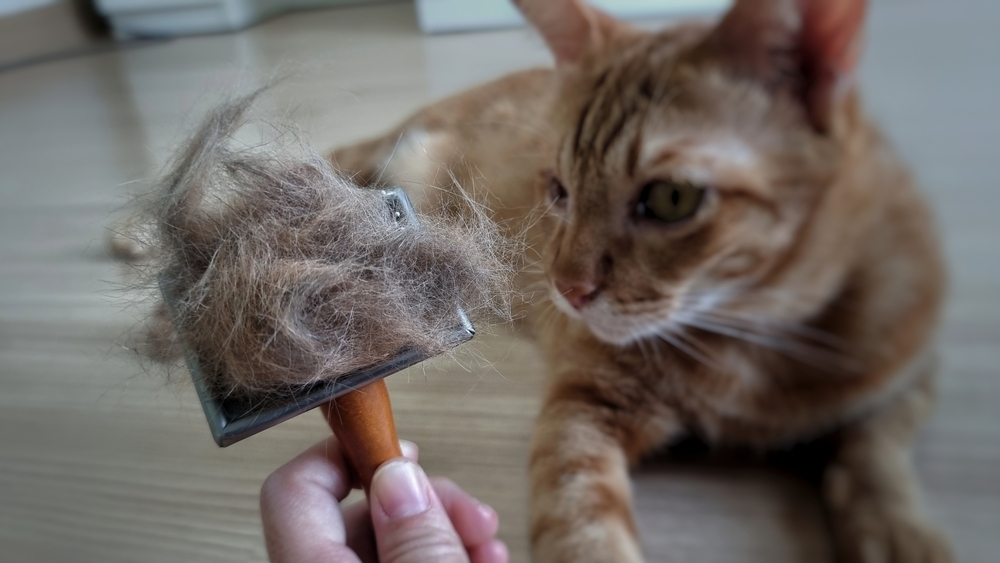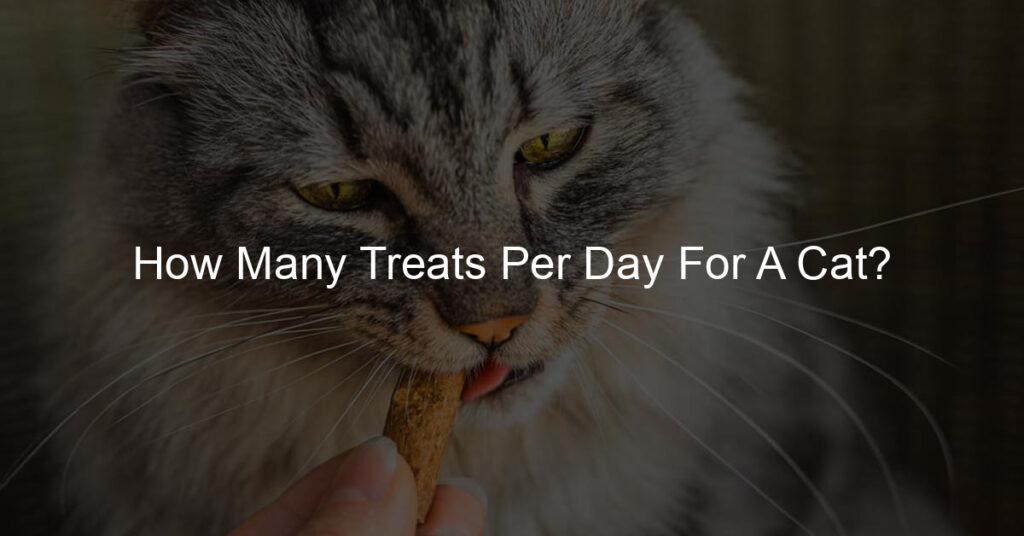How many treats per day for a cat? That’s a question that a lot of pet owners have, and it’s not an easy one to answer.
Cats are unique creatures and need different amounts of food depending on their age, weight, and activity level.
In this blog post, we’ll explore how many treats per day for a cat in detail.
We’ll discuss how many treats your cat needs and some common treat-related problems that cats can experience.
write an outline for the blog post.
How Many Treats Per Day For A Cat?
How many cat treats per day for a cat? This is a question many pet parents ask, and the answer may surprise you.
While giving your feline friend occasional treats is essential, overfeeding can lead to obesity and other health problems.
So, how much is too much? You can have an idea by knowing how many calories your cats need per day. The general rule of thumb is not offering 10% or more than that to your cat’s daily caloric intake in the form of cat treats.
For example, if your cat needs 200 calories per day to maintain healthy weight, your cat’s treat intake should not consume more than 20 calories in treats.
However, this is just a guideline – ultimately, it’s up to you to decide the number of treats your cat eats based on their activity level, overall health, and appetite.
If you have any concerns, be sure to speak with your veterinarian. They will be able to provide personalized advice on how many treats per day is appropriate for your feline friend.
Activity Level Of Cats

Many think of cats as lazy creatures that spend most of their time sleeping. However, the truth is that cats are pretty active and need plenty of exercises to stay healthy.
Cats typically spend several hours each day hunting and stalking their prey in the wild. While domestic cats may not have to worry about finding their next meal, they still have a strong instinct to hunt.
As a result, it’s essential to provide them with opportunities to stay active.
This can be done by playing with them regularly, setting up climbing structures, and providing them with toys that encourage them to move around.
Keeping your cat active can help them stay healthy and prevent obesity.
Read More: What Are Cat Dental Treats For Bad Breath?
Determine How Many Treats Your Cat Needs

If you have a cat, you probably know that they love treats. But how do you determine how many treats your cat needs?
Here are a few tips:
First, consider your cat’s overall diet. Eating a balanced diet of wet and dry cat food may not need as many treats as a cat who is mostly eating dry cat food.
Second, think about your cat’s activity level. A more active cat may need more calories and treats than a less active cat. Finally, consider your cat’s age and health and plan cat’s daily calorie intake accordingly.
Younger, healthier cats may be able to handle more treats than older or sicker cats.
Consider these factors when choosing how many treats to give your cat. And always consult with your veterinarian if you have any questions about your cat’s diet or nutritional needs.
Ten treat-related problems cat can experience

Cat owners know, feline friends are experts at begging for cat treats. While a few occasional snacks won’t do them any harm, too many treats can lead to some severe health problems.
Here are ten of the most common treat-related problems that cats can experience:
- Obesity: Like humans, cats can become overweight if they consume too many calories. Treats are often high in fat and sugar, leading to body weight gain and health problems like diabetes.
- Digestive issues: Cats have a sensitive digestive system, and too many treats can cause vomiting, diarrhea, and other gastrointestinal problems.
- Tooth decay: Sugar is one of the main ingredients in most cat treats, and it can cause tooth decay and gum disease.
- Allergies: Some cats are allergic to the ingredients in pleasure, which can lead to itching, scratching, and other skin problems.
- Diabetes: As mentioned before, excessive consumption of sugary treats can lead to diabetes in cats. Symptoms include increased thirst and urination, weight loss, and lethargy.
- Pancreatitis is a severe condition that occurs when the pancreas becomes inflamed. It can be caused by consuming too much fat, often in cat treats. Symptoms include vomiting, diarrhea, abdominal pain, and lethargy. In severe cases, pancreatitis can be life-threatening.
- Kidney disease: Some ingredients in cat treats (such as phosphorus) can strain the kidneys, leading to kidney disease over time. Symptoms include increased thirst and urination, weight loss, appetite loss, and lethargy.
- Liver disease: Like the kidneys, the liver can also be damaged by consuming too many fatty treats. Symptoms include appetite loss, weight loss, vomiting, diarrhea, yellowing of the skin (jaundice), and lethargy. In severe cases, liver disease can be fatal.
- Urinary tract infections: Too many sugary treats can increase the risk of urinary tract infections (UTIs). Symptoms include pain while urinating, frequency/urgency of urination, blood in the urine, and lethargy. UTIs can be very painful for cats and may require antibiotics to clear up. In severe cases, UTIs can lead to kidney damage.
- Intestinal blockages: Cats love to chew on things, but sometimes they accidentally swallow something they shouldn’t have. Small objects like balls or coins can become lodged in their intestines, causing an intestinal blockage. This is a severe condition that requires surgery to fix. Symptoms include vomiting, constipation, abdominal pain, and lethargy. Intestinal blockages can be life-threatening if not treated promptly.
As you can see, some serious risks are associated with giving your cat countless treats. Of course, you don’t have to completely deprive them of all snacks; just be sure to give them in moderation. And if you notice any of the above symptoms, please take your cat to a veterinarian immediately.
Read More: What Are Soft Cat Treats?
FAQs
- How many treats per day can I give my cat? The answer to this question depends on a few factors, including the type of treat, the size of your cat, and your cat’s overall health. For example, if you’re giving your cat a treat that is high in calories, you’ll want to limit the number of treats per day. On the other hand, if you’re giving your cat a healthy and tasty treat that are low calorie treats, you can give them a few more treats per day. In general, it’s safe to give your cat 1-2 treats per day.
- What are some good cat treats? When it comes to choosing treats for your cat, there are a variety of cat treat options available. Some popular choices include tuna flakes, freeze-dried chicken, and kitty yogurt. You can also find a variety of healthy snacks specifically designed for cats at your local pet store.
- Can I give my cat human food as a treat? While there are some human foods that are safe for cats to eat, it’s generally best to stick to specially-made cat treats. This is because human food is often high in fat and salt, which can be bad for your cat’s health. In addition, some human foods (like chocolate) can be toxic to cats.
- What are some tips for training my cat with treats? When training you consider cat training with , it’s important to use positive reinforcement. This means rewarding your cat for good behavior with a treat. For example, if you’re potty training your kitten, you would give them a treat every time they use the litter box. Another helpful tip is to break up the treat into smaller pieces so that your cat doesn’t get too full and stop responding to the treat altogether.
Final Thoughts
Overall, the number of treats you give your cat each day is ultimately up to you.
Just be mindful of the risks associated with overfeeding, and always consult with your veterinarian if you have any concerns. Thanks for reading!
We hope this blog post was helpful. Comment us if you have any questions; we’ll be happy to help.
Keep Reading: What Is The Difference Between Cat Treats And Dry Cat Food?








